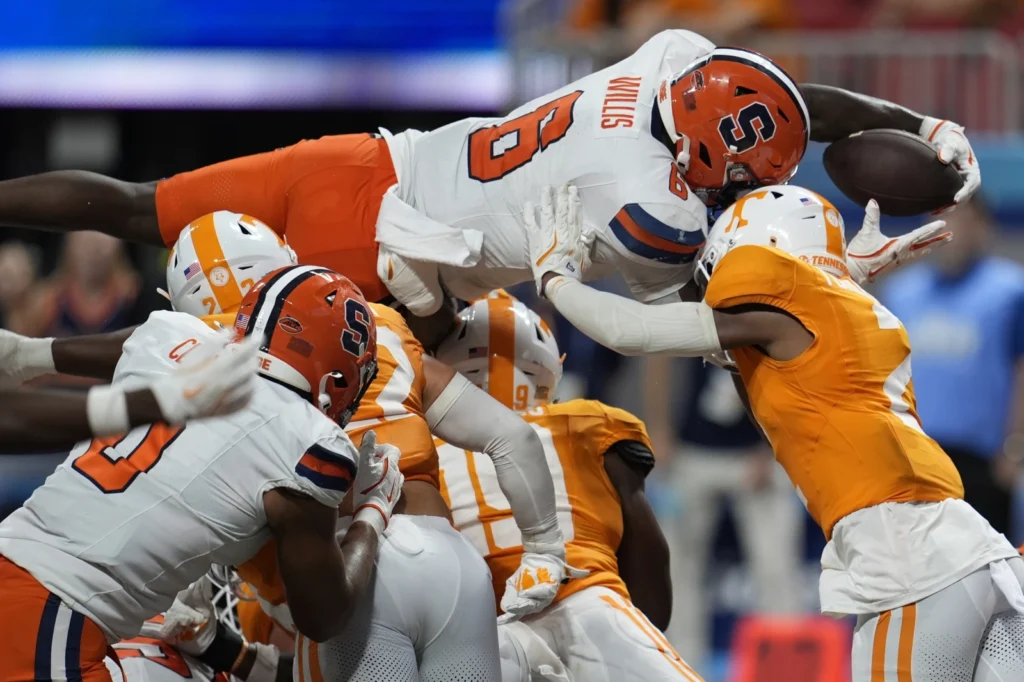The first major weekend of the 2025 college football season delivered high drama both on and off the field. Ohio State and Florida State opened their campaigns with statement victories, while powerhouse programs Texas and Alabama stumbled in early upsets.
But beyond the results on the gridiron, the sport now enters a once-unthinkable era one where athletes are paid, revenue-sharing is legalized, and the College Football Playoff (CFP) has overtaken traditional bowl games as the ultimate prize. Experts warn that this is only the beginning of a sweeping transformation expected to reshape the foundations of college sports.
Big Wins and Bigger Shifts
No. 3 Ohio State edged top-ranked Texas 14-7 in a defensive battle, while Florida State stunned No. 8 Alabama 31-17 in Tallahassee, shaking up early playoff projections. Miami also delivered fireworks, defeating No. 6 Notre Dame 27-24 with a last-second field goal.
While these results fueled excitement on the field, industry insiders caution that the bigger story lies in the billions driving the game. ESPN’s $7.8 billion deal to televise the expanded 12-team CFP has become the cornerstone of the sport’s new revenue-sharing model — one that will directly fund athletes for the first time in NCAA history.
Billions at Stake
Sports law experts note that the deal, set to expire in seven years, will likely spark a new round of negotiations that could bring even more radical changes: private equity investments, an NFL-style “super league,” greater disparities between powerhouse programs and smaller schools, and larger payouts to players.
“It’s not just the playoffs, it’s the top 50 schools,” said sports marketing consultant Joe Favorito. “They could be worth four times what they’re worth now. It’s going to be a reimagining of it all.”
Under the NCAA’s $2.8 billion antitrust settlement, schools can now allocate up to 22% of certain revenues including media rights, ticket sales, and sponsorships directly to players. For powerhouse programs, that equates to $20.5 million annually, a figure expected to rise with future broadcast contracts.
Private Equity and Super League Rumors
The possibility of private equity in college sports has been met with skepticism by some administrators. “We’re owned by the state of Ohio and the state of Ohio is not for sale,” said Ohio State athletic director Ross Bjork. Still, programs like Florida State and the Big 12 have already explored talks with investors.
Proposals such as “Project Rudy,” which floated $9 billion in private investment to form a super league of 70-plus teams, underscore how disruptive outside money could be. Though commissioners of the Big Ten and SEC remain cool on the idea, analysts believe interest will persist as schools look for new funding streams.
Realignment and the NCAA’s Future
Meanwhile, conference realignment continues to shift the college sports landscape. The Big Ten and SEC remain dominant, while the ACC attempts to retain Florida State and Clemson with lucrative incentives. The Pac-12, once a powerhouse, now struggles to maintain relevance.
“The biggest revenue schools are operating in a different dimension,” said Jeffrey Kessler, lead attorney in the House settlement. “There’s no reason to think they won’t continue gaining independence and control over their own destiny though they’re unlikely to abandon the NCAA completely.”
As Week 1 of the season closes, fans savor the early thrills of competition. Yet looming over every touchdown and upset is a stark reality: college football is no longer just a game, but a multibillion-dollar business on the verge of its most radical transformation yet.



